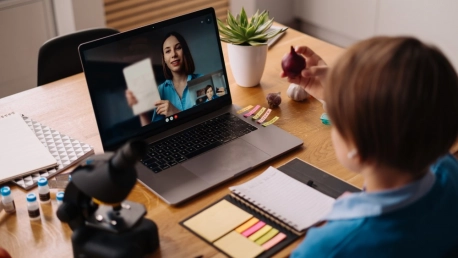In the aftermath of the pandemic returning to normal is not only possible, but also probable, and the past two years have undoubtedly changed education. The healthcare crisis and the accompanying social distancing measures have forced both teachers and students around the world to adapt to new learning techniques and technologies. Remote learning adoption has been accelerated in the US and abroad, and most schools, colleges and universities are still using some form of hybrid or remote learning. However, it remains unclear what the most effective solutions for remote learning are, and which, if any, solutions should be abandoned once the pandemic is over.
Remote learning is not, however, the only trend disrupting education in 2022. As more and more children are moving, changing, or even quitting school, public school enrollment continues to decline across America. Recent population shifts could soon force districts facing enrollment loss to consider layoffs and school closures, while districts faced with a growing number of students may soon need to hire new teachers. Although student population trends will likely return to pre-pandemic levels soon enough, remote learning solutions may once again prove helpful for both schools and students.
Apps that help students reconnect
While the transition to remote learning proved to be difficult for most students and teachers, returning to in-person classes after two years is also challenging. Students from Mountain Range and seven other Denver metro area schools have decided to take matters into their own hands, and implemented a solution. They have started to use an app that was initially designed for college students, called Nod. It assigns specific tasks, helps students to reconnect with their peers, encourages conversation, is structured to guide students towards a common goal—and ultimately helps learners to regain some of the social skills lost during the pandemic.
Unlike social media platforms, Nod helps students engage in real life, while also providing them with the skills needed to develop an in-person social life. According to psychologist Nathaan Demers, who worked on Nod, it was designed to encourage students to set their own goals. “We’re giving students the opportunity to engage in mini missions where they get out into the real world and actually try those skills,” Demers stated. Demers also mentioned that not all social skills come naturally to children or teenagers, and that students prone to depression and anxiety may benefit strongly from using Nod.
Distance learning via Zoom
Not only has COVID-19 changed the way students interact socially, but it also altered how and where parents work. The pandemic forced numerous parents to work from home, while others had to quit their jobs altogether to help their children adapt to remote learning. Although most students have returned to their classrooms by now, some parents have decided to continue to homeschool their children—a decision that may explain why public school enrollment continues to decrease in the US.
While many parents have stated that remote learning via Zoom didn’t work well for their children, especially for the younger students, others have adapted with ease to not only Zoom, but also to apps like KidCoach, Brili Routines, Khan Academy and others. Available on iOS and Android, these apps still help parents and students by providing them with important tools and resources. Furthermore, these apps are more than just a comfortable and more accommodating learning asset—it’s an excellent way to supplement and complement students’ education, by enriching them with modern, new ways of learning.
The future of learning
Despite the recent drop in public school enrollment, traditional in-person training remains essential in education. However, the pandemic has accelerated trends towards online and hybrid learning. Students who are now returning to their public or private school classrooms can benefit from using apps like Nod, which will make the transition easier, and apps like KidCoach, Brili Routines, and Khan Academy can be used simultaneously to enhance traditional resources. By the same token, learning needs vary dramatically from student to student, and therefore it is no surprise that the future of learning is more flexible and personalized.









